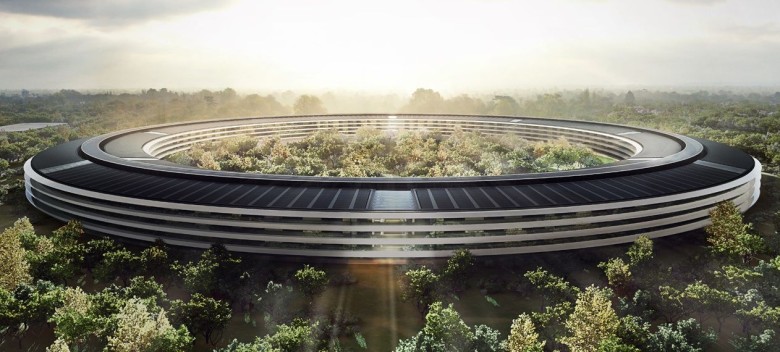As the world has come to expect from almost everything Apple does, their new Foster + Partners designed headquarters has been garnering its fair share of headlines.
Unfortunately, some of those headlines have been for the wrong reasons.
The Silicon Valley Business Journal recently reported on rumours that some departments are rebelling against the new open office workplace standards of Apple Park, and that they intend to stay in the old office, dubbed Infinite Loop.
Apparently Apple Park’s bench seating, work tables and open cubicles could potentially irk employees accustomed to quiet office environments.
How not to follow in Apple's footsteps
At Figure3, we come across this challenge again and again. Asking employees to go from the privacy and quiet of their own private office to the apparently disruptive open-plan layout can leave employees feeling anxious at best and angry at worst.
However, there are a number of steps we recommend businesses take to mitigate the risk of mass complaints when changing workplace standards.
To design for your people, you need to design with them
As Toronto’s leading workplace interior design firm, we’ve pioneered the notion that in order to successfully design for the people who use the office; you must design with them.
But this goes beyond just the Visioning session. Visioning sessions are an important alignment tool that we continue to rely on, but they aren’t designed to elicit the hidden, unconscious needs that every level of the business demands from workplace design.
Introducing the co-design workshop as part of our Connection Point research process, we’re able to illuminate how the physical workplace influences how your staff thinks, feels, decides and behaves.
This process lets us understand how they frame the existing workplace and what the new one needs to afford.
Once we’re able to understand what the people who use the space need, we’re able to develop an incredibly detailed creative brief purposely designed to deliver against the unconscious and therefore hidden needs of staff.
Embrace the flexible office, not the open plan office
Open office vs private office? Let’s agree right now to end this debate once and for all.
Both open spaces and closed spaces are necessary, but a singular focus on one type isn’t sufficient. Instead, the focus must be on creating different types of spaces designed to produce specific outcomes.
Productivity in one place, increased collaboration in another, possibly both in the same place but at different times.
The next-generation office combines private offices, cubicle banks and truly open floor plans (in which even cubicle dividers are dismantled) as well as communal areas and soundproof rooms where employees can go to concentrate on solo work.
The end result is a hybrid office, which incorporates a range of spaces and gives employees the autonomy to move between them throughout the day.
Penguin Random House, TJX and Coca-Cola are all great examples of how we’ve created hybrid offices for some of our clients.
Prioritise change management
Assets move. People transition.
If your company’s planning a relocation, it’s important to understand the difference between relocating assets and relocating employees. You can open a new office with every physical object in its right place – but if employee hearts and minds aren’t with you too, the move won’t be successful in the long term.
This excellent article over at Work Design describes the three phases that the “people” part of a business go through when relocating to a new office:
Transition management has three distinct phases: (1) Letting go of the old ways and the old identity people had. (2) Going through an in-between time when the old is gone but the new isn’t fully operational. (3) Coming out of the transition and making a new beginning.
As the article highlights, resistance is the language of loss.
All that griping and complaining can be understood as a sign that staff is struggling to process the move and the change it signifies.
Communicating an office relocation requires more than just project updates with a ribbon cutting ceremony at the end.
Messaging and strategy must be agreed at the beginning so that what you tell staff and when is clear. This is a moment in time to powerfully restate your company’s vision and strengthen trust in leadership.
Recruit tummellers
After businesses have moved into their new space, it’s important to model the kinds of behaviours each of the new spaces demands.
We recommend recruiting ‘tummellers’; people who will catalyze others into action by putting the desired behaviour on display.
Read more about this important post-move role we covered here.
